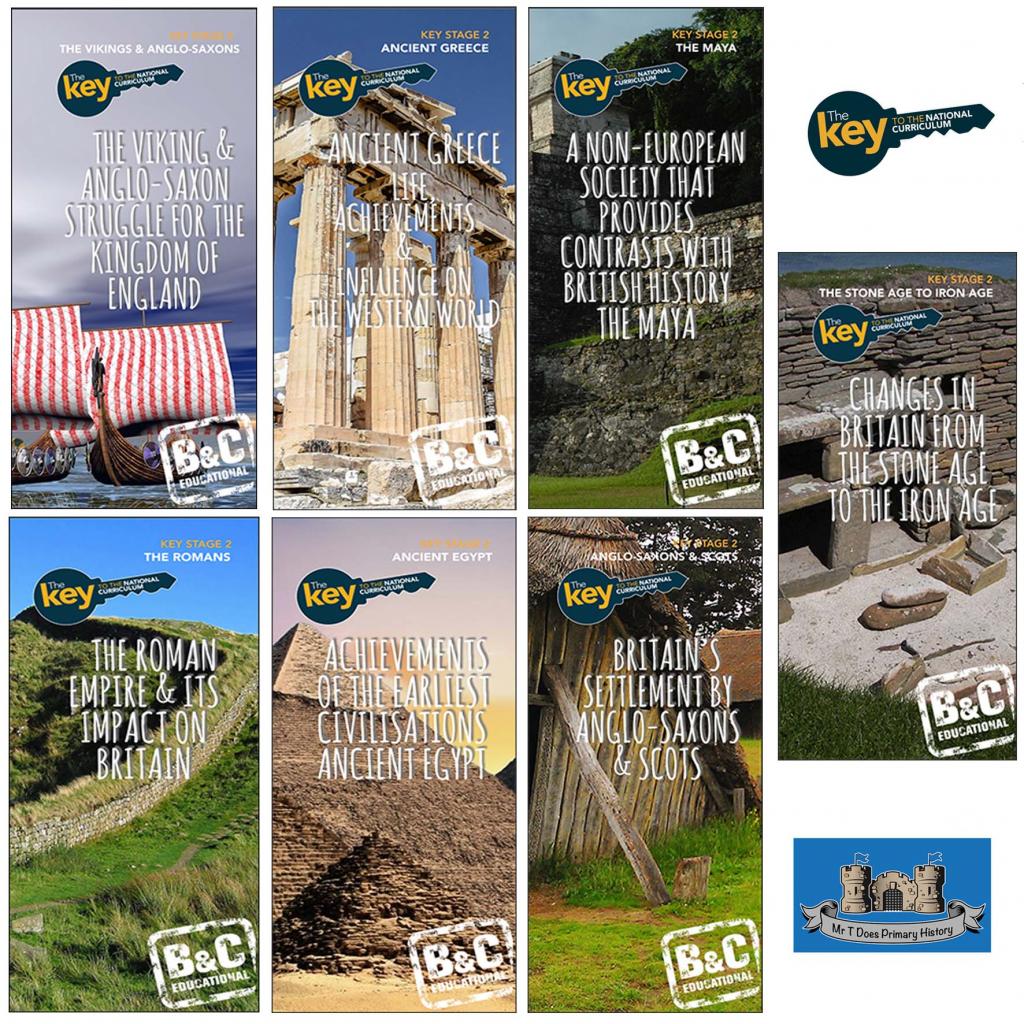Key to... Changes in Britain from The Stone Age to the Iron Age
Key to... Changes in Britain from The Stone Age to the Iron Age
Couldn't load pickup availability
Developed with the expertise of history specialist Stuart Tiffany (Mr T Does History), this engaging KS2 resource aligns with the National Curriculum to provide a comprehensive history unit for primary pupils. The module encourages children to explore the changes in Britain from the Stone Age to the Iron Age, helping them understand key historical concepts and form connections between different periods.
Key Learning Areas:
- Historical Concepts: Students will delve into key concepts such as continuity and change, cause and consequence, similarity and difference, and significance, allowing them to make connections, draw contrasts, analyse trends, and develop structured accounts.
-
Topics Covered:
- Using Historical Evidence and Sources: Learning how to interpret and use different historical sources to understand the past.
- Life in the Stone Age: Exploring the Palaeolithic, Mesolithic, and Neolithic periods and understanding the lives of early humans.
- Iron Age Settlements and Tribes: Investigating Iron Age settlements, tribes, and how life progressed into the Iron Age.
- Human History Narrative: Understanding how the Stone and Iron Ages fit into the broader story of human history.
Engaging Activities and Worksheets:
Children will engage with fun, interactive worksheets and activities, such as:
- Role-Playing as Hunter-Gatherers: Stepping into the shoes of Stone Age people to understand their lifestyle.
- Timeline Sequencing: Learning to sequence events across different time periods.
- Continuity and Change: Investigating how life changed from the Palaeolithic through to the Iron Age.
- Comparing Time Periods: Understanding the similarities and differences between the Palaeolithic, Mesolithic, and Neolithic periods.
- Iron Age Hill Forts: Investigating the defensive settlements and structures of the Iron Age.
- Tool Development in the Bronze Age: Exploring how tools evolved through the Bronze Age period.
Skills Development:
Through these activities, pupils will:
- Sequence Historical Periods: Understand how different periods fit together in the historical timeline.
- Grasp Duration: Develop a sense of time and understand how long periods lasted.
- Historical Narrative: Begin to understand the concept of historical narrative and how history is structured.
- Identify Differences: Compare their own lives with those of people in the Palaeolithic or Mesolithic periods.
- Examine Non-Written Sources: Learn to work with primary sources, such as archaeological evidence, to draw conclusions.
- Make Deductions: Develop skills to make evidence-based deductions and explain findings.
- Understand Bronze Making: Discover how bronze was made and used during the Bronze Age.
- Compare Sources: Compare different types of historical sources to understand the past more clearly.
What’s Included:
- Planning Leaflet: Guidance on how to effectively teach the unit.
- Worksheets and Activities: Hands-on activities designed to make learning fun and engaging.
- Video Links: Resources to enhance the learning experience.
- Suggested Activities: Ideas for classroom activities that deepen understanding.
This Stone Age to Iron Age unit is a fantastic way for your pupils to develop historical thinking and gain a deeper understanding of these key periods in British history. By the end of the unit, they will have built essential historical skills and knowledge, ready to apply them to further study.
Purchase today to access the planning leaflet, worksheets, video links, and suggested activities, all compliant with the KS2 National Curriculum History requirements!
Tags: Key to..., Resourcing
View full details








